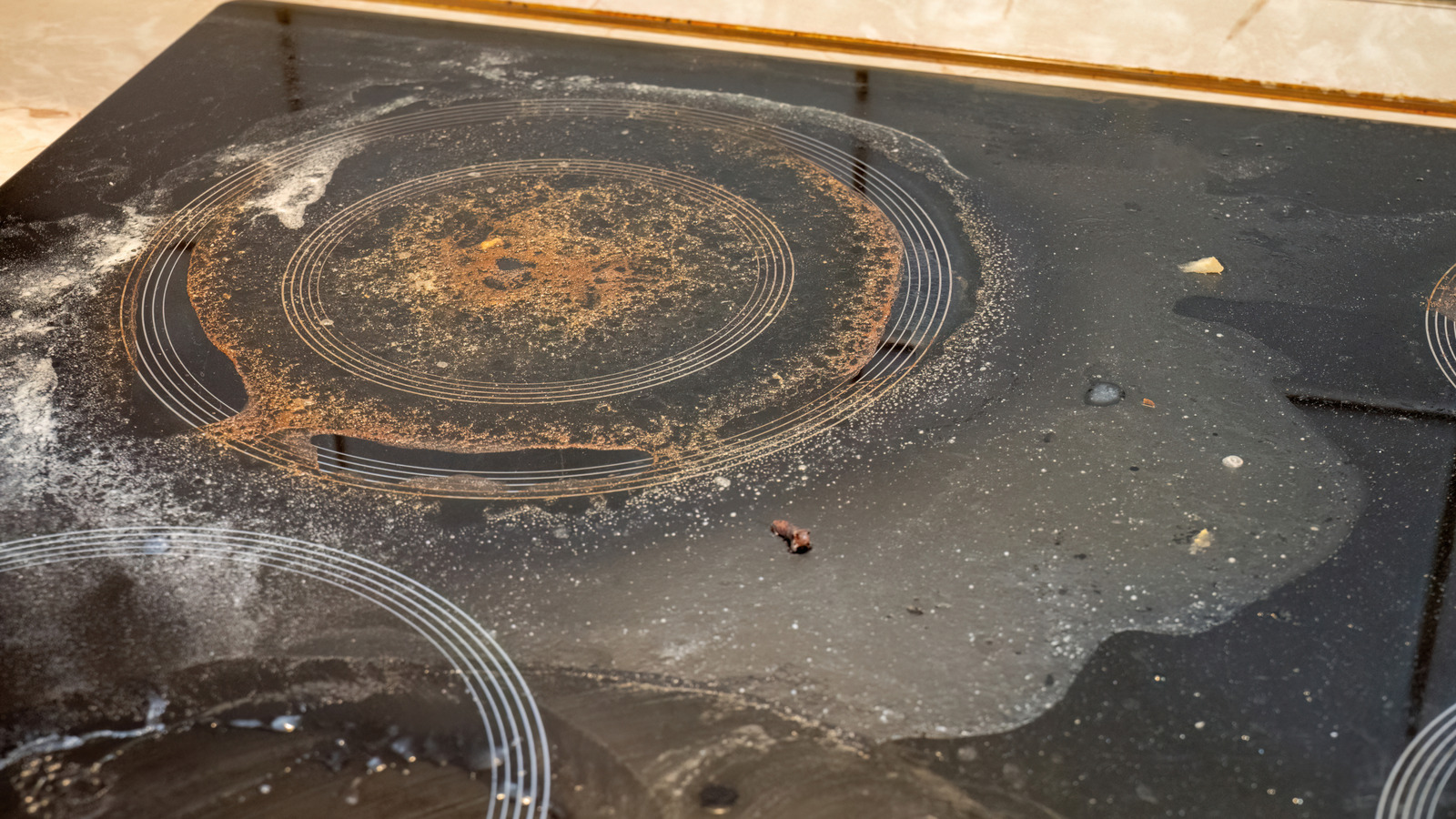
"Simply spritz white vinegar onto the cool stovetop, then follow it with a generous sprinkle of baking soda. While that's sitting, soak a towel with hot water, wring it out, and then lay the damp towel on top. Leave everything exactly as it is for anywhere from 15 to 30 minutes. During this time, the vinegar's acidity will do all of the work of loosening up the stubborn grime."
"Once time's up, remove the damp towel and use a non-abrasive cleaning sponge or microfiber cloth to wipe everything away. This is where the genius-ness of cleaning with baking soda shines - its coarseness helps dislodge and lift the softened debris with ease. All it takes is a bit of elbow grease, and you'll eventually reach the beautiful stovetop finish that's been hiding under the grime this entire time."
"If the white vinegar-baking soda combo doesn't seem to work for you, you're going to have to up the ante a little bit. Skip the white vinegar and grab some dish soap instead - something ammonia and chlorine-free, like Dawn Dishwashing Liquid. The way to use it is very similar to vinegar: add a squirt to a bucket of hot water and stir to create a sudsy solution after dusting your stovetop with baking soda."
Grease and burned-on residue on stovetops can be removed using a homemade cleaner of white vinegar and baking soda. Spritz white vinegar onto a cool stovetop, sprinkle baking soda, then cover with a hot, wrung-out towel for 15–30 minutes to let the vinegar loosen grime. Remove the towel and wipe with a non-abrasive sponge or microfiber cloth; baking soda's abrasiveness helps lift softened debris. For tougher stains, use a sudsy solution made from ammonia- and chlorine-free dish soap mixed with hot water after dusting with baking soda. In extreme cases, a razor-blade scraper can be used carefully.
Read at Tasting Table
Unable to calculate read time
Collection
[
|
...
]